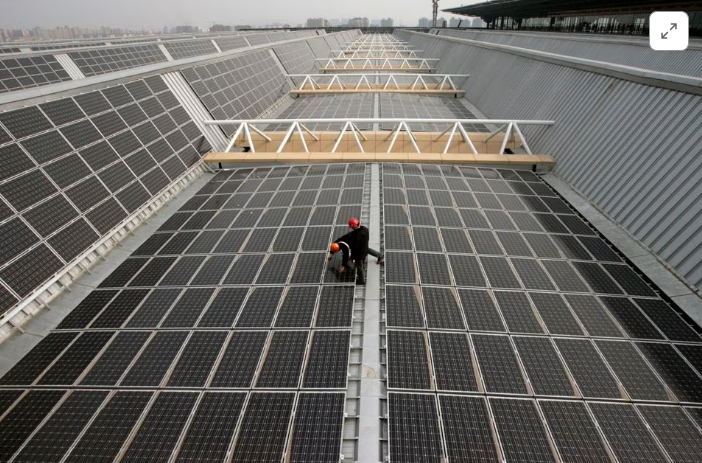
In the bid to reform a rigid and disjointed system that has contributed to severe power outages in recent years, the powerful state planner aims to set up a national power system by 2030.
That will merge six regional grids into a unified electricity market with spot trading that allows quicker response to supply and demand issues.
A system blueprint issued last week lays out the mechanisms for spot trading nationwide for the first time, as well as pricing determined by short-term supply and demand conditions.
"Power sector reform is critical in China's energy transition and ensuring energy security," said Xuewan Chen, an energy transition analyst at LSEG.
The cabinet has pledged to double down on such reforms as China looks also to spur a move to renewable power, since the world's largest producer of wind and solar power keeps adding new capacity but faces challenges in supplying it in time.
A nationwide spot market will allow discovery of electricity prices in real time, boosting renewable power consumption, Fitch Ratings analysts said in a note following the new rules.
Most power deals are governed by medium and long-term contracts, though a handful of province have trialled spot trading since 2019.
"Downward price pressure during the hours when renewable power output increases may guide coal- and gas-fired power generators to reduce production," the Fitch analysts said.
"Renewable power would also become more competitive due to its lower variable cost."
In theory, as the share of renewables in the power mix increases, coal-fired plants should shift from baseload operations to providing standby capacity during demand peaks.
But the new rules also propose a capacity compensation scheme for "reasonable returns" at thermal power plants, Fitch said.
For coal power plants, such payments may just entrench the fuel as a back-up source and reduce power trading between provinces, said Anders Hove of the China energy research programme at the Oxford Institute for Energy Studies.
China's economic planner, the National Development and Reform Commission (NDRC), did not respond to a Reuters request for comment on the risks analysts pointed out.
A capacity payment compensates power generators for standby capacity, regardless of how much energy they actually produce.
China is considering introducing capacity fees, charged to industrial and commercial power users, from the beginning of next year, the Bloomberg news agency said on Tuesday, citing a draft of the plan.
But the rules give provinces leeway in adoption "according to actual conditions", which could potentially slow the reforms, said Lauri Myllyvirta, lead analyst at the Centre for Research on Energy and Clean Air and Global Energy Monitor.
Local governments, often the owners of coal power plants and mines, may resist a spot market system that threatens use of thermal power.
"The owners of the excess coal power capacity that is currently protected by the inefficient electricity system have a major interest in opposing reforms," said Myllyvirta.